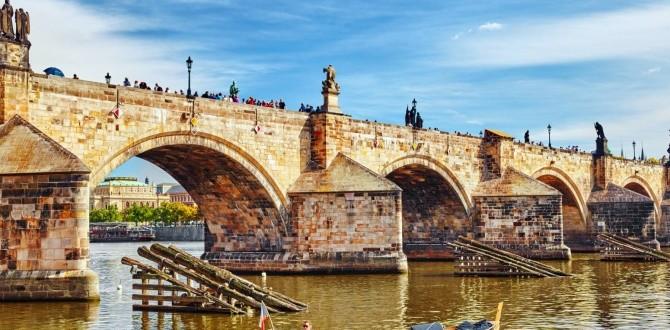Find the best Addis Ababa sunrise and sunset photo spots for stunning travel pictures. This guide reveals top locations, best times, and tips for capturing beautiful golden hour light in Ethiopia’s capital, making your photography easy and rewarding.
Capturing the magic of sunrise and sunset can transform a travel photo from ordinary to extraordinary. In a city as vibrant and dynamic as Addis Ababa, the golden hours offer breathtaking displays of light and color painting the urban landscape and surrounding hills.
However, finding the perfect vantage point at just the right moment can sometimes feel like a treasure hunt. Don’t worry, planning your photo adventures for these beautiful times of day is simpler than you think! This guide will walk you through the most scenic spots in Addis Ababa for sunrise and sunset, sharing practical tips to ensure you get those postcard-worthy shots without any hassle.
Discovering Addis Ababa’s Golden Hours: A Photographer’s Dream
Addis Ababa, Ethiopia’s bustling capital, is perched high on the Entoto Mountains, offering a unique geographical advantage for photographers. This elevation provides panoramic views that are amplified during the gentle hues of sunrise and the dramatic flares of sunset.
As the sun climbs or dips below the horizon, the city awakens or settles down, creating dynamic scenes of activity bathed in warm, inviting light. Whether you’re a seasoned photographer or just love a good selfie with a stunning backdrop, understanding the best times and places to shoot can make all the difference in your travel memories.
The early morning light offers a soft, diffused glow, perfect for capturing the city as it stirs to life. You’ll find quieter streets, local markets starting to set up, and a serene atmosphere. On the other hand, sunset in Addis Ababa is a spectacle of fiery oranges, deep reds, and soft purples that often linger in the sky, casting a warm embrace over the sprawling metropolis.
These moments are fleeting, and having a plan will maximize your chances of capturing their full beauty. Let’s dive into the essential spots and strategies for an unforgettable Addis Ababa sunrise and sunset photography experience.
Essential Addis Ababa Sunrise Photo Spots
Starting your day with a view as the sun rises over Addis Ababa is a magical experience. The light is soft, the air is crisp, and the city is typically still serene, offering fantastic photographic opportunities. Here are some top spots to consider:
1. Entoto Hill: The Majestic Overlook
Often considered the crown jewel for panoramic views of Addis Ababa, Entoto Hill is a must-visit, especially for sunrise. Its high elevation provides an unobstructed vista of the entire city stretching out below. As the sun begins its ascent, the sky often explodes with color, and the city lights start to fade, revealing the urban sprawl in the gentle morning glow. You can see the distinct features of the city’s architecture, from traditional buildings to modern high-rises, all bathed in a warm, golden light. The air here is usually cooler, making it a pleasant spot to linger.
Why it’s great for sunrise:
- Unmatched panoramic views of Addis Ababa.
- High elevation ensures clear sightlines.
- Fewer crowds in the early morning.
- Opportunity to capture the city waking up.
Tips for shooting at Entoto Hill:
- Arrive at least 30-45 minutes before the official sunrise time to set up and find your perfect spot.
- Bring a tripod for sharper images, especially in lower light conditions.
- Dress in layers, as it can be quite chilly at this altitude in the early morning.
- Consider shooting with a wider lens to capture the expanse of the city and the sky.
2. Mount Zuqualla: A Spiritual and Scenic Journey
While a bit further out and requiring an earlier start, Mount Zuqualla offers a truly unique sunrise experience. This dormant volcano is home to a sacred monastery and a beautiful crater lake. The journey often involves a hike, which, when timed correctly, leads you to spectacular viewpoints by sunrise. The spiritual atmosphere combined with the breathtaking natural beauty makes for incredibly compelling photographs. The interplay of light on the crater lake and the surrounding greenery is particularly captivating.
Why it’s great for sunrise:
- Stunning natural landscape with a crater lake.
- A unique spiritual and cultural element for diverse shots.
- Less touristy than other accessible viewpoints.
Tips for shooting at Mount Zuqualla:
- Confirm the best hiking routes and timings with local guides.
- Allow ample travel time from Addis Ababa; it’s a significant detour.
- Pack essentials for hiking, including water and sturdy footwear.
- Be respectful of the monastery and its inhabitants.
3. Lafto Area and Surrounding Hills: Local Perspectives
For a more grounded, local perspective of sunrise, consider areas on the outskirts of the city that still offer elevation, such as parts of the Lafto district or other elevated neighborhoods. These spots might not offer the sweeping panoramic views of Entoto, but they provide intimate scenes of daily life beginning – bread sellers setting up, early commuters, and the soft glow illuminating homes and local markets. It’s an excellent way to capture the essence of Addis Ababa at dawn.
Why it’s great for sunrise:
- Captures authentic local life and daily routines.
- Provides intimate, character-filled shots.
- Easier to access than more distant viewpoints.
Tips for shooting at Lafto:
- Scout locations beforehand during daylight to identify interesting compositions.
- Be mindful and respectful of residents; ask permission before taking close-up photos of people.
- Focus on the interplay of light and shadow on the urban environment.
Essential Addis Ababa Sunset Photo Spots
As day turns to night, Addis Ababa transforms once more with the warm, dramatic colors of sunset. The city’s silhouette against a painted sky, the twinkling lights beginning to appear, and the diffused light that softens the urban edges create a magical atmosphere. Here are the best places to capture this daily spectacle:
1. Entoto Hill: Sunset Spectacle
Just as it’s magnificent for sunrise, Entoto Hill remains a prime location for sunset photography. The advantage here is the unobstructed western view, allowing you to witness the sun descending directly over the horizon. The city lights begin to sparkle below as the sky transitions through a spectrum of oranges, pinks, and purples. It’s also a popular spot for locals to gather as the day winds down, adding a dynamic human element to your photos.
Why it’s great for sunset:
- Expansive western views for the setting sun.
- City lights begin to twinkle as dusk approaches.
- Vibrant sky colors are often on full display.
- Opportunity to capture the city winding down.
Tips for shooting at Entoto Hill:
- Allow ample time to reach the viewpoint; traffic can be a factor.
- Consider the “blue hour” that follows sunset, when the city lights are most prominent and the sky still holds color.
- Experiment with long exposures to capture light trails from vehicles on the roads below.
2. Sheger Park (formerly Ghion Park) Area: Urban Oasis Glow
Sheger Park, an extensive urban development project along the Akaki River, offers a different kind of sunset experience. While not as elevated as Entoto, its riverside setting, modern landscaping, and distinct architectural features provide unique photographic subjects. The surrounding areas can also offer elevated spots with views of the park and cityscape as the sun goes down, reflecting in water features or highlighting interesting structures.
Why it’s great for sunset:
- Modern urban landscapes and architectural elements.
- Riverside views can offer great reflections.
- A well-developed area that is pleasant to explore.
Tips for shooting at Sheger Park:
- Explore different angles within and around the park for varied shots.
- Look for opportunities to incorporate the water features or bridges into your compositions.
- Check if any specific features are illuminated after dark for interesting twilight shots.
3.bole Medhane Alem Cathedral Plaza: Iconic Skyline View
The area around the Bole Medhane Alem Cathedral can offer some elevated perspectives looking towards parts of the city, particularly as the sun sets behind them. This location provides an opportunity to capture iconic landmarks against a colorful sky. The mix of religious architecture and the sprawling urban backdrop can make for powerful images. You can find various viewpoints from nearby buildings or slightly elevated public spaces in the vicinity.
Why it’s great for sunset:
- Iconic architectural landmarks as foreground or elements.
- Offers a mix of culture and urban landscape.
- Likely to be accessible.
Tips for shooting at Bole Medhane Alem:
- Look for elevated spots adjacent to the cathedral for the best city views.
- Be mindful of church services or events if you are photographing within or near the cathedral grounds.
- Focus on silhouettes of the cathedral against the vibrant sunset sky.
4. Rooftop Bars and Restaurants: Elevated Comfort
Addis Ababa has a growing number of rooftop bars and restaurants that offer stunning city views without the need for extensive travel or hiking. Places in areas like Kazanchis, Bole, or near major hotels often provide uninhibited access to the sky and city panorama. This option combines great photography with the chance to relax with a drink or meal, making it incredibly convenient. You can capture the sun dipping below the horizon, the emergence of city lights, and the general evening ambiance.
Why it’s great for sunset:
- Comfortable and convenient access to views.
- Often provides excellent, unobstructed skylines.
- Combines photography with dining or socializing.
Tips for shooting at Rooftops:
- Research and book a table at a rooftop venue known for its views.
- Be considerate of other patrons; maintain a low profile during your photography.
- Check the venue’s policy on professional photography if you plan extensive shoots.
Golden Hour Photography Tips for Addis Ababa
Capturing the perfect sunrise or sunset shot involves more than just being in the right place at the right time. Here are some essential photography tips tailored for the unique light conditions and environments of Addis Ababa:
Timing is Everything
Understand that “golden hour” refers to the period shortly after sunrise and before sunset.
- Sunrise: Aim to arrive at your chosen spot about 30-45 minutes before the sun is expected to appear above the horizon. This allows you to set up, compose your shots, and photograph the pre-dawn glow.
- Sunset: Be in place at least 45 minutes before the estimated sundown. The most dramatic colors often appear in the 15-20 minutes after the sun has disappeared below the horizon (the “blue hour”).
You can find accurate sunrise and sunset times for Addis Ababa by checking reliable weather sources or dedicated astronomy websites such as timeanddate.com.
Gear Essentials
While you can take great photos with a smartphone, a few key pieces of equipment can elevate your results:
- Tripod: Essential for low-light conditions during golden hour. It allows for longer exposure times without camera shake, resulting in sharper images and the ability to capture more detail in shadows and highlights.
- Wide-Angle Lens: Perfect for landscape shots, capturing the expansive cityscapes and dramatic skies of Addis Ababa.
- Telephoto Lens (Optional): Useful for isolating specific elements in the distance, like distant mountains or unique buildings, or for compressing the perspective as the sun sets.
- Extra Batteries & Memory Cards: Golden hour photography can be continuous, and you don’t want to miss a moment.
- Lens Cleaning Cloth: Dust is common, and a clean lens is crucial.
Camera Settings (Beginner-Friendly)
If you’re using a DSLR or mirrorless camera:
- Shooting Mode: Start with Aperture Priority (Av/A) or Shutter Priority (Tv/S). Aperture Priority lets you control depth of field, while Shutter Priority lets you control motion blur. For landscapes, a slightly smaller aperture (f/8 to f/11) is often good for sharpness. For motion blur in city lights, a slower shutter speed is key. If using Manual (M), learn to balance aperture, shutter speed, and ISO.
- ISO: Keep your ISO as low as possible (e.g., 100-400) for the cleanest images. Increase only if necessary to achieve proper exposure in very low light.
- White Balance: Auto white balance usually does a good job, but for warmer tones, try setting it to “Cloudy” or “Shade,” or experiment with Kelvin settings between 5500K and 7000K.
- Focus: Use autofocus to lock focus, or switch to manual focus to ensure critical sharpness on your subject.
If you’re using a smartphone, explore your camera app’s settings for “Pro” mode, which often offers manual control over ISO, shutter speed, and focus.
Composition Techniques
Beyond the technical aspects, think about how you arrange elements in your frame:
- Rule of Thirds: Imagine your frame divided into nine equal sections by two horizontal and two vertical lines. Place key elements where these lines intersect or along the lines for a more balanced and visually appealing composition.
- Leading Lines: Use roads, rivers, or architectural elements to guide the viewer’s eye into the scene.
- Silhouettes: Position your subject (a person, a building, a tree) against the bright sky during sunrise or sunset to create a striking silhouette.
- Foreground Interest: Don’t just focus on the sky. Include an interesting foreground element (rocks, flowers, a building) to add depth and context.
- Reflections: Look for water bodies or wet surfaces that can reflect the colorful sky or city lights.
Safety and Respect
When exploring new locations for photography, especially in a bustling city like Addis Ababa, safety is paramount.
- Be Aware of Your Surroundings: Especially in less touristy areas or at dawn/dusk. Keep your valuables secure and out of sight.
- Go with a Buddy: It’s always safer to explore with a friend, especially when visiting unknown locations at odd hours.
- Hire a Local Guide: For places like Mount Zuqualla or less familiar neighborhoods, a local guide ensures you stay safe and know the best spots. A reputable tour operator can often arrange this.
- Respect Local Culture: Dress modestly, especially when visiting religious sites. Always ask permission before taking close-up photos of people.
For general travel safety, resources like the U.S. Department of State’s travel advisories can offer useful information. According to the U.S. Department of State, while most of Ethiopia is safe for travelers, it’s wise to stay informed about current conditions.
Understanding Addis Ababa’s Microclimates
Addis Ababa’s altitude and topography influence its weather, which can affect your photography conditions. As a high-altitude city, expect temperature fluctuations. Mornings can be cool to cold, warming up significantly by midday, and then cooling down again rapidly after sunset. The air can also be hazy at times, particularly during the dry season (October to February), which can either soften the light beautifully or obscure distant views. During the rainy season (June to September), cloud cover can dramatically alter the sky, sometimes leading to spectacular, albeit unpredictable, sunsets and sunrises.
The urban environment itself also creates heat islands. This means that areas within the city might feel warmer than surrounding higher elevations. When planning your photo sessions, keep these microclimates in mind. For example, Entoto Hill will almost always be cooler than lower city areas like Bole. Dressing in layers is crucial for comfort, allowing you to adjust to changing temperatures throughout your golden hour ventures.
Capturing People and Culture in Golden Light
Addis Ababa is a city teeming with life and vibrant culture. Golden hour is a fantastic time to capture portraits and scenes of daily life bathed in warm, flattering light.
- Street Vendors: Many vendors start their day early or remain active as the sun sets. Their stalls, goods, and faces lit by the soft sun can make for compelling photo stories.
- Commuters and Daily Life: Observe people as they go about their routines. The soft light can add a touch of magic to ordinary moments, like a group chatting at a cafe or a family walking home.
- Churches and Monasteries: Many religious sites are active during sunrise and sunset. The warm light on these historic structures, or on people making their devotions, can be very evocative.
Remember to always practice respectful photography. Brief interactions, a smile, and asking permission before taking a close-up portrait can go a long way in creating genuine and meaningful images. A simple phrase




